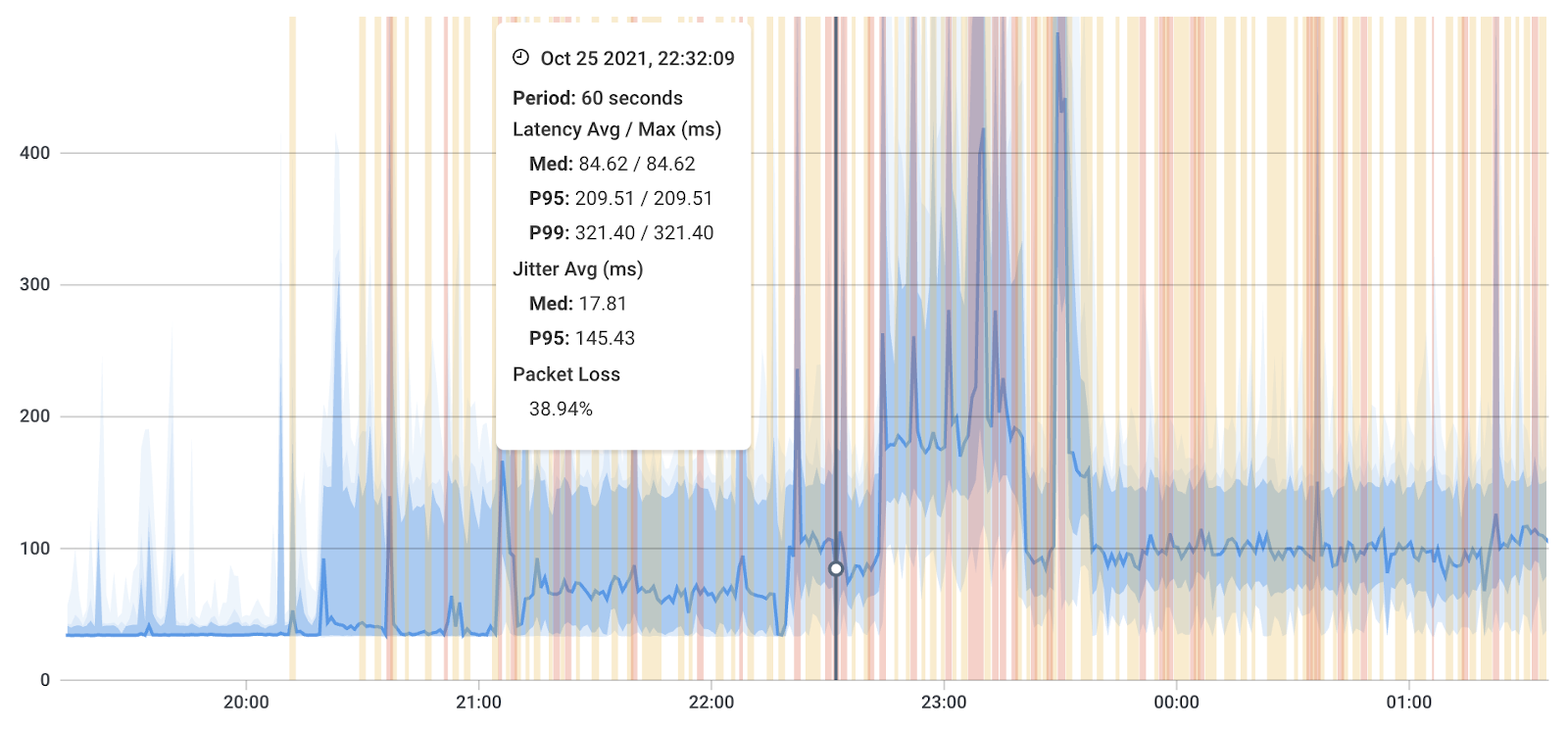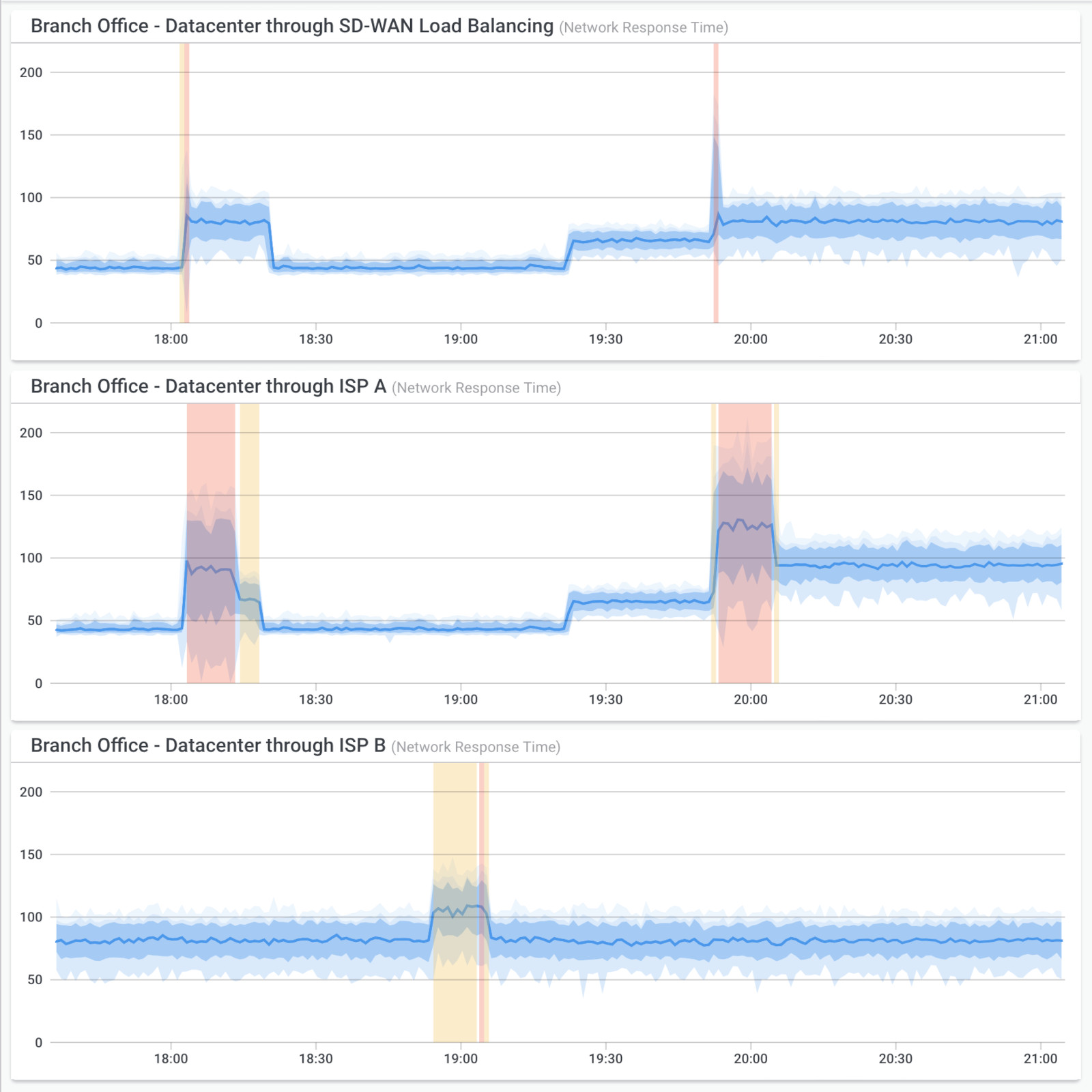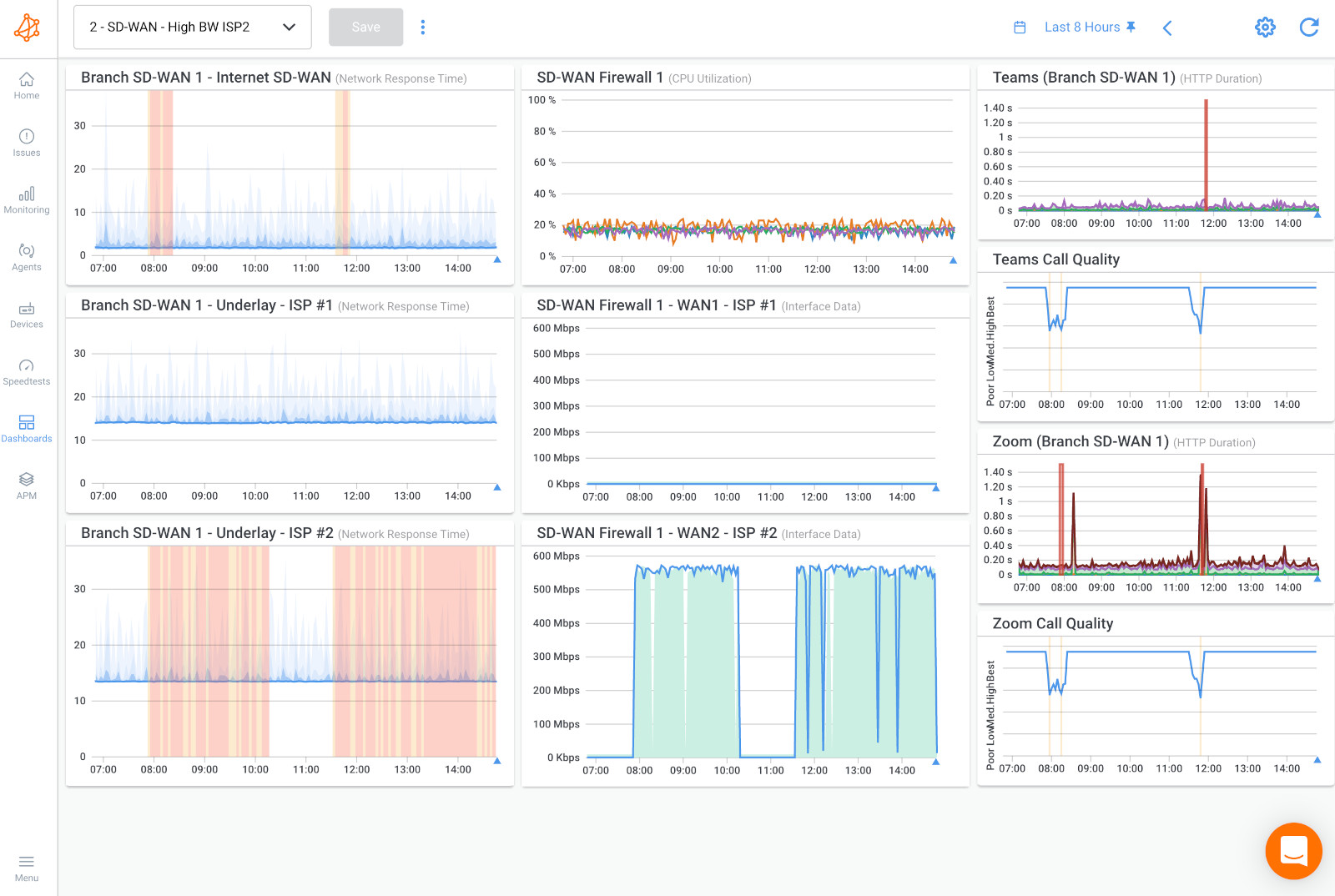Table of Contents
Table of Contents
Packet loss is a common problem in computer networks that can have a significant impact on network performance and business productivity. When data packets are lost through the network, the data they contain needs to be retransmitted, which can slow down data transfer rates and cause interruptions in real-time applications like video conferencing and voice calls.
So, if you're tired of playing a game of "Where's my data?" and want to get to the bottom of the issue, read on! In this article, we'll explore what causes packet loss and the top reasons why your data might be going MIA. We'll also provide tips on how to mitigate the impact of packet loss and keep your network running smoothly.
Packet loss is a common network issue that happens when data packets are transmitted over a network but are lost or dropped during transit and fail to reach their destination. Data packets that are dropped or delayed data in transmission can impact network and application performance and affect the user experience.
Packet loss can be inbound or outbound:
- Inbound Packet Loss → With inbound packet loss, packets coming to your network are lost before they arrive.
- Outbound Packet Loss → With outbound packet loss, packets sent from your network never reach their destination.
Packet loss is a common problem in computer networks that can have a significant impact on network performance and business productivity. When data packets are lost through the network, the data they contain needs to be retransmitted, which can slow down data transfer rates and cause interruptions in real-time applications like video conferencing and voice calls.
Additionally, high levels of packet loss can indicate underlying problems with network infrastructure, such as congestion, hardware failures, or configuration issues. Therefore, it's important for IT professionals and network admins to understand the causes of packet loss to quickly identify and resolve network issues and minimize the impact on network performance and business productivity.


You can’t exactly see packet loss in your network, or the causes of packet loss - but you can feel the impact of packet loss on your network and business.
To detect packet loss in your network and applications, and identify the exact causes, network admins use a tool like Obkio Network Performance Monitoring software, which continuously detects packet loss by sending synthetic packets every 500ms, and recording how many packets are dropped in transmission.

With Monitoring Agents deployed in all network locations, it can then collect the information you need to understand what in your network is the cause of the packet loss issue.

Packet loss can be caused by a variety of factors, and understanding these causes is critical to diagnosing and resolving network issues. Some of the most common causes of packet loss include:
Network congestion is the most common cause of packet loss. When a network is overburdened with too much traffic, it can cause delays in transmission or dropped packets. This can occur when a network is under-provisioned or when there is an unusually high amount of traffic on the network.
Network congestion can happen:
- In your network or even outside of your network, such as on your ISP's network or the Internet
- In both local and wide area networks (WAN)
- Between networks, such as between your ISP and the Microsoft network, where a lot of traffic aggregates
- More specifically on the customer Edge Router facing ISPs, in the last mile of the network, where circuit speeds are lower

The distance between two points in a network can also contribute to network congestion. As the distance between two points in a network increases, the potential for bottlenecks also increases, leading to more packet loss. For example, data transmission from one continent to another can experience more network congestion due to the longer distance.
Network congestion is usually temporary, but it can be a sign of a larger issue in your network. It can cause annoying network problems that can affect packet loss and other network performance metrics, such as faulty or overused devices or bad network configurations.
By monitoring network performance and detecting network congestion, IT professionals can take steps to minimize packet loss and optimize network performance.
Faulty network equipment is another common cause of packet loss in a network. This can include issues with network interfaces, routers, switches, or other network devices. Outdated or malfunctioning equipment can cause packets to be dropped or delayed, resulting in reduced network performance.
- Processing Power: One of the most common causes of packet loss on layer 3 network devices, such as routers or firewalls, is a lack of processing power. These devices are responsible for routing and handling network traffic, and if they lack the necessary processing power to handle the traffic, packets can be dropped or delayed. This is especially true for customer firewalls, as security features can be intense on device resources.

- Physical Cabling: The physical cabling used in a network can also cause packet loss. Ethernet cables can be damaged or suffer from electromagnetic interference, leading to signal degradation and packet loss. Fiber optic cables can become kinked or damaged, and the connectors can become dirty and require cleaning. Optic transmitters can also have low signals or the distance between the transmitter and receiver can be too long for the signal to reach the receiver with an acceptable level, leading to packet loss.
While IT professionals should conduct regular preventive maintenance on network components, it can be challenging to inspect all cables and connectors. That's why monitoring network performance is critical. By monitoring network performance, IT professionals can quickly detect and troubleshoot packet loss issues caused by faulty equipment, minimizing the impact on network performance and business productivity.
Security measures are intended to protect a network from unauthorized access and data breaches. However, these measures can also cause packet loss, especially if they’re not configured properly.
For example, firewalls or intrusion detection systems may be configured to block or filter certain types of data packets that are deemed to be a security risk. But, this can result in legitimate data packets being dropped or delayed, leading to packet loss.
To prevent packet loss caused by security measures, IT professionals need to carefully configure security measures to ensure that they do not inadvertently block legitimate data packets. This can involve implementing security policies that allow for the passage of necessary data packets while blocking potential threats.
Additionally, IT professionals must regularly monitor and update security measures (like monitoring Firewalls) to ensure that they are functioning as intended and not causing packet loss.
By balancing the need for network security with the need for network performance, IT professionals can help minimize packet loss caused by security measures.

Software bugs or glitches in network devices software, firmware, or operating systems can also cause packet loss in a network. This can be caused by a range of issues, such as:
- Improperly configured network device software
- Or bugs in the software, firmware, or operating system code, which can cause unexpected behavior, including dropped or delayed packets.
To prevent packet loss caused by software bugs, IT professionals need to be vigilant in their monitoring and management of network software, firmware, and operating systems. Regular software updates, firmware updates, and operating system updates can help prevent bugs from occurring or fix them when they do.
Additionally, it's important to continuously monitor network devices and analyze historical data, to pinpoint when the packet loss first began. Sometimes, you may see that packet loss started right after a software update. In this case, you can do a roll-back quickly to fix the issue.
By staying up-to-date with software updates, firmware updates, and operating system updates, and being proactive in identifying and addressing software bugs, IT professionals can minimize the impact of packet loss caused by software issues.
Long distances between network devices or multiple network hops can increase the likelihood of packet loss. Latency is the amount of time it takes for a data packet to travel from one network device to another. High latency can be caused by long distances between network devices or multiple network hops. When latency is high, it can cause delays in the delivery of data packets, increasing the likelihood of packet loss.
For example: If a company's headquarters are located in one country and its branch office is located in another country, the distance between the two locations can cause high latency. Additionally, if data must travel through multiple network hops to reach its destination, latency can increase further, leading to higher packet loss.
To prevent packet loss caused by high latency, IT professionals can:
Implement network optimization techniques such as Quality of Aervice (QoS) settings, which can prioritize certain types of network traffic over others.
And use network performance monitoring tools to measure network latency and take steps to reduce high latency in parts of the network, such as adding network devices or improving network infrastructure.
By monitoring network latency and taking steps to optimize network performance, IT professionals can minimize the impact of packet loss caused by latency.
QoS settings allow IT professionals to prioritize network traffic based on importance, ensuring that critical applications, such as VoIP or video conferencing, are given priority over less important traffic, such as file transfers or email. While QoS can help ensure that critical traffic is delivered reliably and with minimal delay, it can also potentially cause packet loss in some situations.
Rate Limiting: traffic shaping or rate limiting limits the amount of bandwidth available for certain types of traffic to ensure that they do not overwhelm the network. However, if the limit is set too low or if there is a sudden surge in traffic, packets may be dropped due to congestion, resulting in packet loss.
Buffer Management Techniques: In order to manage network congestion, routers and switches typically use buffers to temporarily store packets that cannot be transmitted immediately. However, if the buffer becomes full, incoming packets may be dropped to make room for new traffic, resulting in packet loss.
QoS Misconfigurations: If QoS policies are not properly configured, packets may be dropped or misrouted, resulting in packet loss.
While QoS can be a powerful tool for managing network traffic and ensuring that critical applications are given priority, it must be configured properly to avoid causing packet loss. Network administrators should carefully monitor QoS settings and adjust them as necessary to ensure that packet loss is minimized while still meeting the needs of the network users.
Learn how to monitor QoS performance on your private network, including MPLS, SD-WAN, or VPN, using Obkio's DSCP features.
Learn more

Now that we’ve gone over the most common causes of packet loss, let’s go over some best practices for avoiding these causes to essentially minimize the possibility of packet loss happening in your network. To minimize packet loss, IT professionals can implement the following best practices:
- Monitor Network Performance: Continuously monitor network performance to proactively identify and monitor packet loss happening anywhere in your network. With continuous network monitoring, you can quickly identify and troubleshoot packet loss before it affects other applications or the user experience.


High Quality Network Equipment: Use high-quality network equipment and cabling to ensure optimal network performance and prevent physical errors.
Configure Network Devices: Ensure that network devices, such as routers and firewalls, are properly configured and have adequate processing power to handle network traffic.
Implement Security Measures: Implement appropriate network security measures, such as firewalls and intrusion detection systems, to prevent attacks and unauthorized access that can cause packet loss.
Configure QoS or CoS: Prioritize critical network traffic using QoS (for MPLS networks) or CoS (for SD-WAN networks), or other appropriate techniques to ensure that important traffic is delivered with the highest priority. By configuring CoS and prioritization settings to balance the needs of different types of network traffic, and using network monitoring tools to identify instances of packet loss, IT professionals can minimize the impact of packet loss caused by network traffic prioritization and maintain optimal network performance and business productivity.
Troubleshoot Packet Loss: Finally, to further minimize the impact of packet loss, IT professionals also need tools and skills to quickly locate and troubleshoot packet loss as soon as it occurs, before it can affect end users and business operations.
By implementing these best practices, IT professionals can help minimize the impact of packet loss on network performance and business productivity, and ensure that their network infrastructure is operating at optimal levels.
Lost packets? No problem! Follow our guide and master the art of troubleshooting packet loss and say goodbye to network issues for good!
Learn more

By having a solid understanding of the causes of packet loss and a well-defined troubleshooting process, IT professionals can minimize the impact of packet loss on their network performance and business productivity, and ensure their network infrastructure is operating at optimal levels.
In this article, we covered the different possible causes of packet loss. However, when you detect packet loss in your network, you don’t troubleshoot by checking all these causes one by one.
To determine the cause of packet loss in your network, you need to monitor, measure, identify, and locate the packet loss using a tool like Obkio Network Performance Monitoring software, which pinpoints:
- If packet loss happened
- When it happened
- Where it happened in your network
Once you’ve identified the general location of the packet loss, you can begin the troubleshooting process by eliminating each cause starting with the most common.



























 Obkio Blog
Obkio Blog







